Bradford-on-Avon
Continuing our travels westwards on the Kennet and Avon canal (K&A) we went through pretty Bradford-on-Avon:
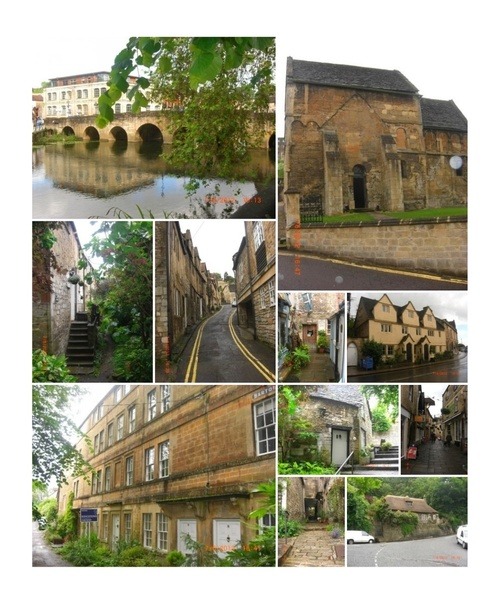
Looking down from the bridge crossing the River Avon we saw this swan on her nest and got talking to a local lady who was also watching it. She told us that the swan’s previous nest had been washed away by the swollen river two weeks earlier. The silly thing (the swan) had built the new nest in the same spot! She (the local lady) also explained that she spent as much time on the bridge as possible as she had previously chased some young yobs who were throwing stones at the nest. By the time we came back through Bradford-on-Avon the nest was empty so we never found out whether the swan was successful.
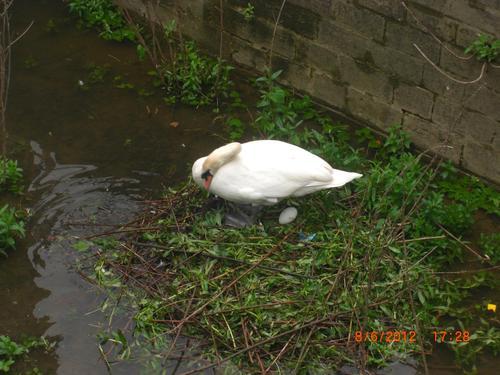
Aqueducts
There are two major aqueducts on the K&A and they are both in this area. They were both built to cross the River Avon from one side of the valley to the other.
First we came to Avoncliffe aqueduct. We found the turns a bit tight when we hired a boat here years ago and grounded the boat in front of a crowd of tourists but were OK this time round. There is a nice old micro brewery pub just off the aqueduct. The banks along here are full of wild garlic; the smell is wonderful at the right time of year. It is the leaves from this plant that are used in cooking so we made sure we took what we needed for the next few days.
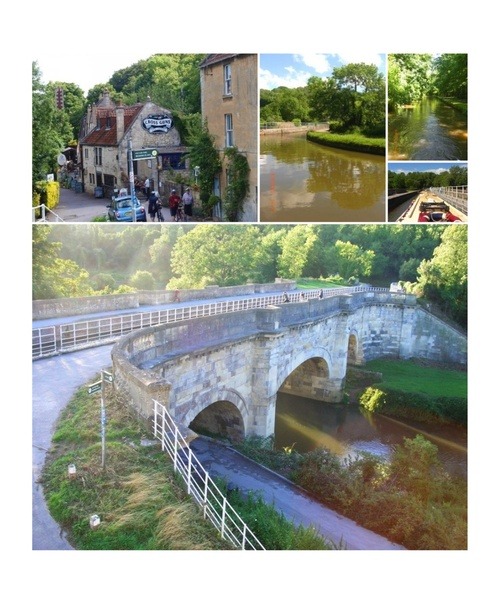
Dundas aqueduct was next. This is a honey pot for tourists; the old Somersetshire Coal canal joins at the aqueduct and has a rowing boat hire centre and cafes.
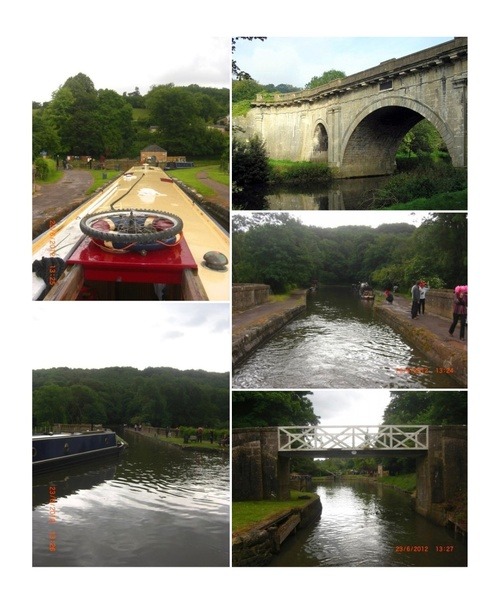
Strange art/sculptures
Well, they were strange to us. I’m sure artists find them normal. There were several of these pieces between Bradford-on-Avon and Bath. Here are three that we managed to photograph.
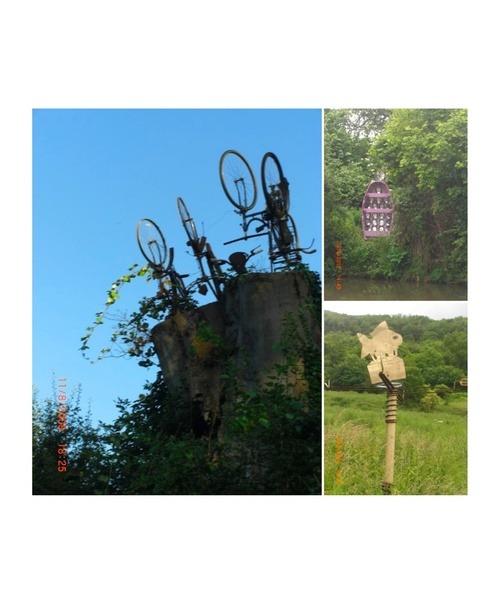
Pumping stations
After Dundas aqueduct we went past Claverton pumping station. Pumping stations were built at the same time as the canals and were/are used to pump water up to the higher levels. The highest level on a canal is known as the summit level. The summit level on the K&A is 15 miles long, i.e. 15 miles without a lock. The stretches between locks are called pounds.
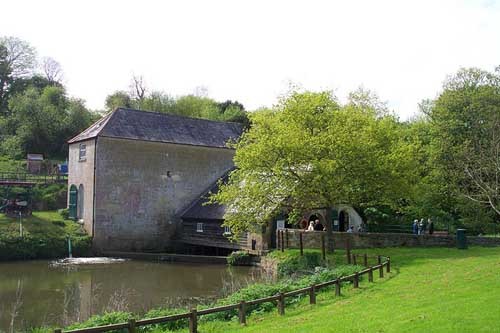
Many pumping stations are open to the public and are fascinating to visit. We had spent some time at Crofton pumping station (just west of Hungerford). They say it is the oldest steam beam engine in the world that still works and is still in its original building. I suppose they mean not restored and rebuilt in a museum. It was here that we had the clever idea of pressure washing the boat. Unfortunately the water pressure at the water point was not high enough to get the pressure pump working. Still, it provided a good spectacle for the visitors to the pumping station who had wandered down to the canal for picnics or to gongoozle. Here is a link to an informative video about the Crofton beam engines.
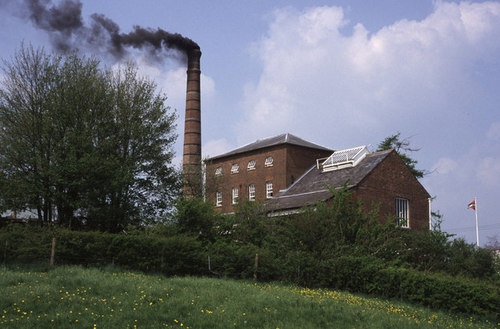
As regular canal travellers we get email alerts of breakdowns, blockages and stoppages etc. to help us plan our journeys. Coincidentally I received this one yesterday; it would have been a bit frustrating if we were travelling through that area at the moment.
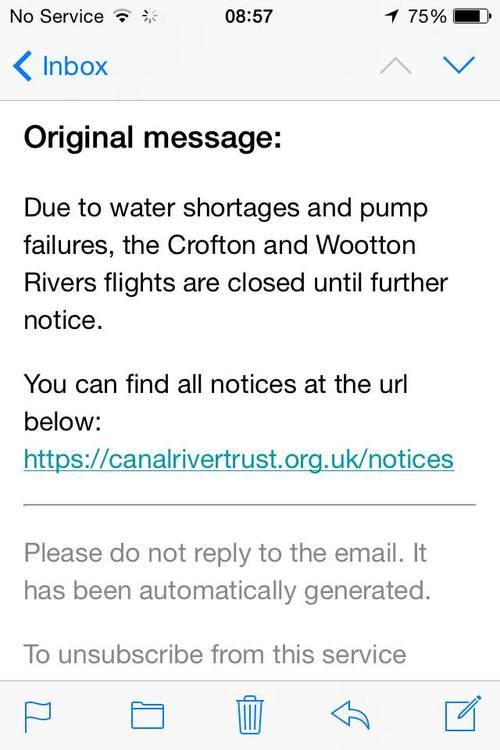
Continuing our travels westwards on the Kennet and Avon canal (K&A) we went through pretty Bradford-on-Avon:

Looking down from the bridge crossing the River Avon we saw this swan on her nest and got talking to a local lady who was also watching it. She told us that the swan’s previous nest had been washed away by the swollen river two weeks earlier. The silly thing (the swan) had built the new nest in the same spot! She (the local lady) also explained that she spent as much time on the bridge as possible as she had previously chased some young yobs who were throwing stones at the nest. By the time we came back through Bradford-on-Avon the nest was empty so we never found out whether the swan was successful.

Aqueducts
There are two major aqueducts on the K&A and they are both in this area. They were both built to cross the River Avon from one side of the valley to the other.
First we came to Avoncliffe aqueduct. We found the turns a bit tight when we hired a boat here years ago and grounded the boat in front of a crowd of tourists but were OK this time round. There is a nice old micro brewery pub just off the aqueduct. The banks along here are full of wild garlic; the smell is wonderful at the right time of year. It is the leaves from this plant that are used in cooking so we made sure we took what we needed for the next few days.

Dundas aqueduct was next. This is a honey pot for tourists; the old Somersetshire Coal canal joins at the aqueduct and has a rowing boat hire centre and cafes.

Strange art/sculptures
Well, they were strange to us. I’m sure artists find them normal. There were several of these pieces between Bradford-on-Avon and Bath. Here are three that we managed to photograph.

Pumping stations
After Dundas aqueduct we went past Claverton pumping station. Pumping stations were built at the same time as the canals and were/are used to pump water up to the higher levels. The highest level on a canal is known as the summit level. The summit level on the K&A is 15 miles long, i.e. 15 miles without a lock. The stretches between locks are called pounds.

Many pumping stations are open to the public and are fascinating to visit. We had spent some time at Crofton pumping station (just west of Hungerford). They say it is the oldest steam beam engine in the world that still works and is still in its original building. I suppose they mean not restored and rebuilt in a museum. It was here that we had the clever idea of pressure washing the boat. Unfortunately the water pressure at the water point was not high enough to get the pressure pump working. Still, it provided a good spectacle for the visitors to the pumping station who had wandered down to the canal for picnics or to gongoozle. Here is a link to an informative video about the Crofton beam engines.

As regular canal travellers we get email alerts of breakdowns, blockages and stoppages etc. to help us plan our journeys. Coincidentally I received this one yesterday; it would have been a bit frustrating if we were travelling through that area at the moment.

1 note
No comments:
Post a Comment